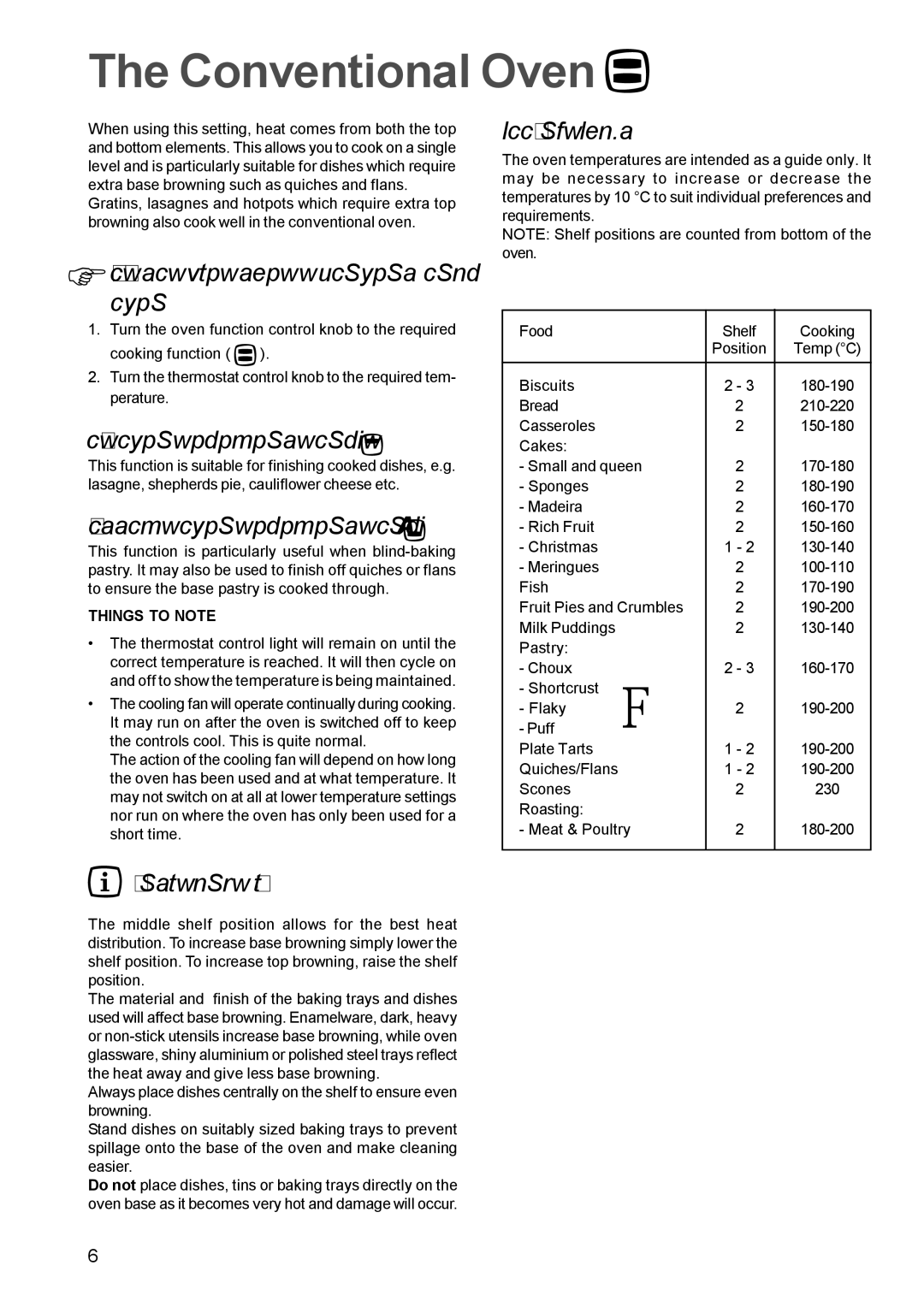EOB 812 specifications
The Electrolux EOB 812 is a sophisticated built-in oven that combines modern technology with user-friendly features, making it an ideal choice for culinary enthusiasts. Designed to enhance the cooking experience, this oven is packed with innovative features and specifications that set it apart in the crowded market of kitchen appliances.One of the standout characteristics of the Electrolux EOB 812 is its spacious interior, which boasts a generous capacity. This allows users to prepare multiple dishes simultaneously, accommodating large meals for families or gatherings with ease. The oven's interior is equipped with high-quality enamel that promotes effortless cleaning, ensuring that maintenance is straightforward even after intensive use.
The Electrolux EOB 812 employs advanced cooking technology, particularly its multifunctional cooking modes. With options such as fan cooking, grilling, and conventional heating, users can select the optimal setting for their culinary creations. The innovative SurroundCook technology ensures that heat is distributed evenly throughout the oven, eliminating cold spots, and resulting in perfectly cooked meals every time.
Another remarkable feature of this oven is its intuitive electronic control panel, which simplifies operation. The digital display is user-friendly and allows for precise temperature and timing adjustments. In addition, the oven comes with a built-in timer that alerts users when their dishes are ready, minimizing the risk of overcooking.
Safety is also a key consideration with the Electrolux EOB 812. It is equipped with a child safety lock that prevents accidental changes to the oven settings, making it a practical choice for households with young children. Moreover, the cooling fan quickly dissipates heat from the exterior, ensuring that the oven remains safe to touch even during intense cooking sessions.
The Electrolux EOB 812 is designed with energy efficiency in mind. Its A+ energy rating signifies reduced electricity consumption without compromising cooking performance. This environmentally friendly approach aligns with the contemporary trend towards sustainable living and energy-conscious appliance usage.
In conclusion, the Electrolux EOB 812 is a blend of functionality, safety, and efficiency. With its spacious design, advanced cooking technologies, intuitive controls, and a focus on energy savings, this built-in oven stands out as a durable and reliable choice for any kitchen. Whether you are preparing everyday meals or gourmet dishes, the EOB 812 is equipped to meet a wide range of culinary needs.
